Biography
He was the son of a sculptor and art restorer, Franz Herterich, and the younger brother of painter Johann Caspar Herterich. He taught at the Kunstschule Stuttgart and then from 1898 as a professor at the Academy of Fine Arts Munich. His pupils included Karl Caspar, Maria Caspar-Filser, Leo Delitz [ de ], Adolf Erbslöh, David Karfunkle, Käthe Kollwitz, Hermann Mühlen (1886-1964), Walter Püttner [ de ], Julius Seyler, Maria Slavona, and Anton Zilzer. For his services to art, he was awarded the Order of Maximilian in 1908 and made a life peer.
Herterich was heavily involved along with others in producing the pictorial art for Schloss Wolfsbrunn in the Ore Mountains. [2]

The Nymphenburg Palace is a Baroque palace situated in Munich's western district Neuhausen-Nymphenburg, in Bavaria, southern Germany. Combined with the adjacent Nymphenburg Palace Park it constitutes one of the premier royal palaces of Europe. Its frontal width of 632 m (2,073 ft) even surpasses Versailles Palace. The Nymphenburg served as the main summer residence for the former rulers of Bavaria of the House of Wittelsbach.
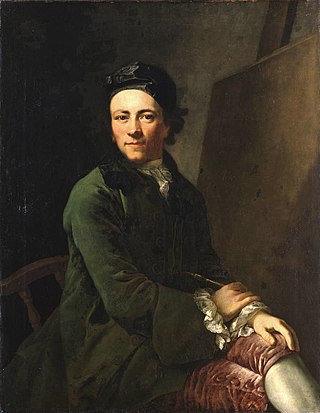
Anton Graff was an eminent Swiss portrait artist. Among his famous subjects were Friedrich Schiller, Christoph Willibald Gluck, Heinrich von Kleist, Frederick the Great, Friederike Sophie Seyler, Johann Gottfried Herder, Gotthold Ephraim Lessing, Moses Mendelssohn and Christian Felix Weiße. His pupils included Emma Körner, Philipp Otto Runge and Karl Ludwig Kaaz.

Leo von Klenze was a German architect and painter. He was the court architect of Ludwig I of Bavaria.
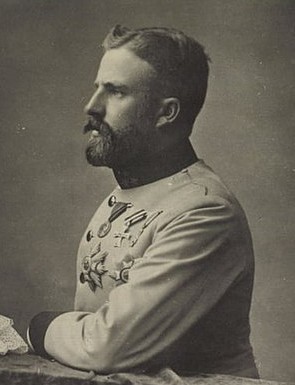
Prince Ludwig Gaston of Saxe-Coburg and Gotha, known in Brazil as Dom Luís Gastão, was a German prince of the House of Saxe-Coburg and Gotha-Koháry, and the last surviving grandchild of Emperor Pedro II of Brazil.
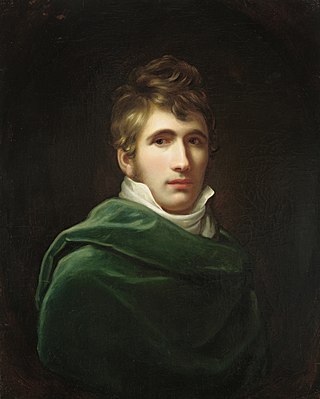
Joseph Karl Stieler was a German painter. From 1820 until 1855 he worked as royal court painter of the Bavarian kings. He is known for his Neoclassical portraits, especially for the Gallery of Beauties at Nymphenburg Palace in Munich, as well as his emblematic portrait of Ludwig van Beethoven, which has become one of his most famous works.

Max Feldbauer (1869–1948) was a German painter, associated with the Munich Secession. He is primarily known for rural, Bavarian scenes.
Count Franz-Ludwig Schenk von Stauffenberg is a German lawyer and politician from the CSU. He was a member of the Bundestag from 1976 to 1987 and of the European Parliament from 1984 to 1992. He is the son of World War II colonel and resistance leader Claus von Stauffenberg.

Max Doerner was a German artist and art theorist.

Schloss Wolfsbrunn is the local name for an imposing hotel building in the village of Stein in the borough of Hartenstein in the south of Zwickau district in the German state of Saxony. It was built in 1911 as the villa of a wealthy mining businessman. Since 1997 it has been owned by the Leonhardt brothers.

The Munich Secession was an association of visual artists who broke away from the mainstream Munich Artists' Association in 1892, to promote and defend their art in the face of what they considered official paternalism and its conservative policies. They acted as a form of cooperative, using their influence to assure their economic survival and obtain commissions. In 1901, the association split again when some dissatisfied members formed the group Phalanx. Another split occurred in 1913, with the founding of the New Munich Secession.

Maria Slavona, born Marie Dorette Caroline Schorer was a German impressionist painter.

Rudolph Friedrich Miess was an Imperial Austrian-born painter from the Transylvania region, today part of Romania. Although he did numerous portraits, he is best known for his landscapes, which combine the Academic and Impressionist styles.
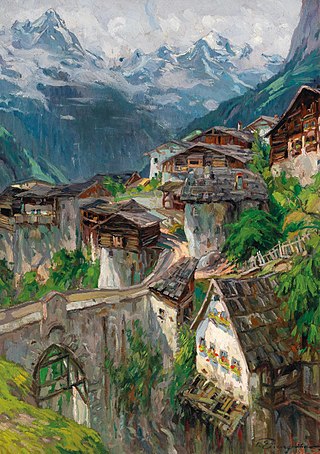
Karl Felix Eisengräber was a German painter.
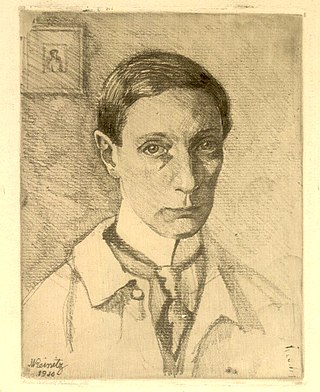
Maximilian Reinitz was an Austrian Cubist painter; associated with the Neue Sachlichkeit movement.

Wilhelm Dürr the Younger was a German painter and draughtsman, as well as a professor at the Academy of Fine Arts in Munich.

Wilhelm Hauschild was a German historical painter. He created murals for Neuschwanstein Castle.

Kaspar Schleibner was a German church painter.

Johann Caspar Herterich, sometimes known as Hans was a German history and genre painter. He was also a popular Professor at the Academy of Fine Arts, Munich.
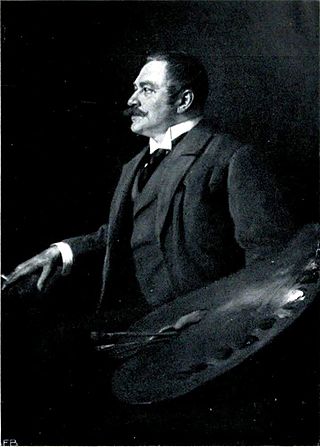
Caspar Ritter was a Swiss portrait painter; primarily of women. He also created genre scenes and nudes.
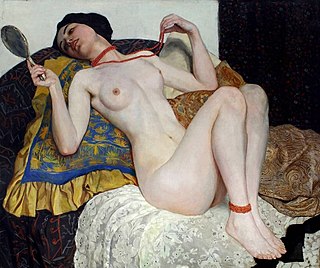
Wilhelm Gallhof was a German painter and sculptor. At the beginning of the 20th century he was one of the most important German painters of female nudes in the Impressionist and Jugendstil movements.
This page is based on this
Wikipedia article Text is available under the
CC BY-SA 4.0 license; additional terms may apply.
Images, videos and audio are available under their respective licenses.



















